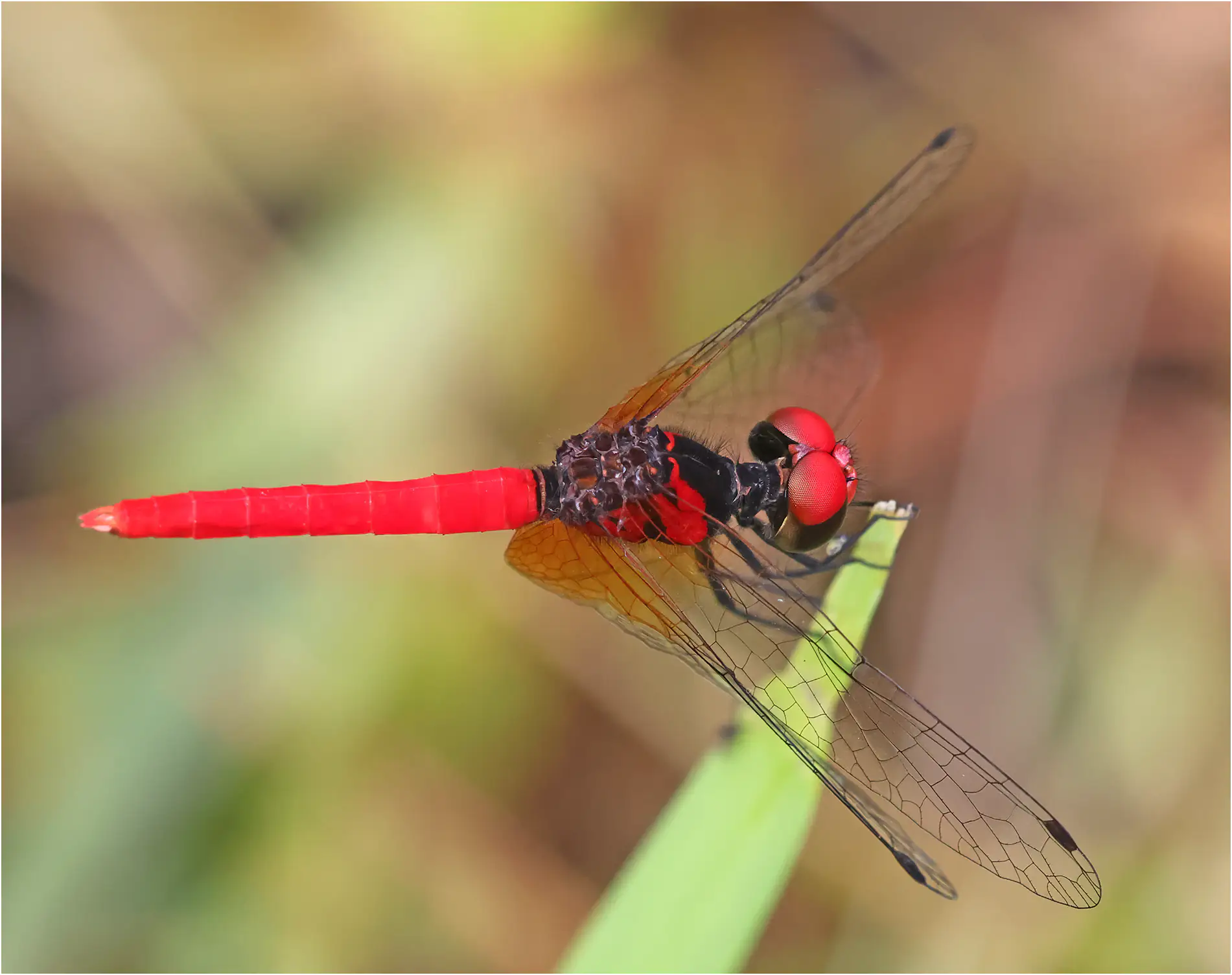
For about twelve years I had been dreaming of seeing Nannophya pygmaea (1) male again, probably the smallest known Libellulidae.
Mature males are absolutely magnificent in their red habit which contrasts with the green of the grasses which surround them and which they choose as a perch. They like the sun, which is not the case for females and immatures, they are lively and fast, not too difficult to approach.
Eight Nannophya have been described, the last three only in 2020, one in Laos, another in Australia, the last one in Korea.
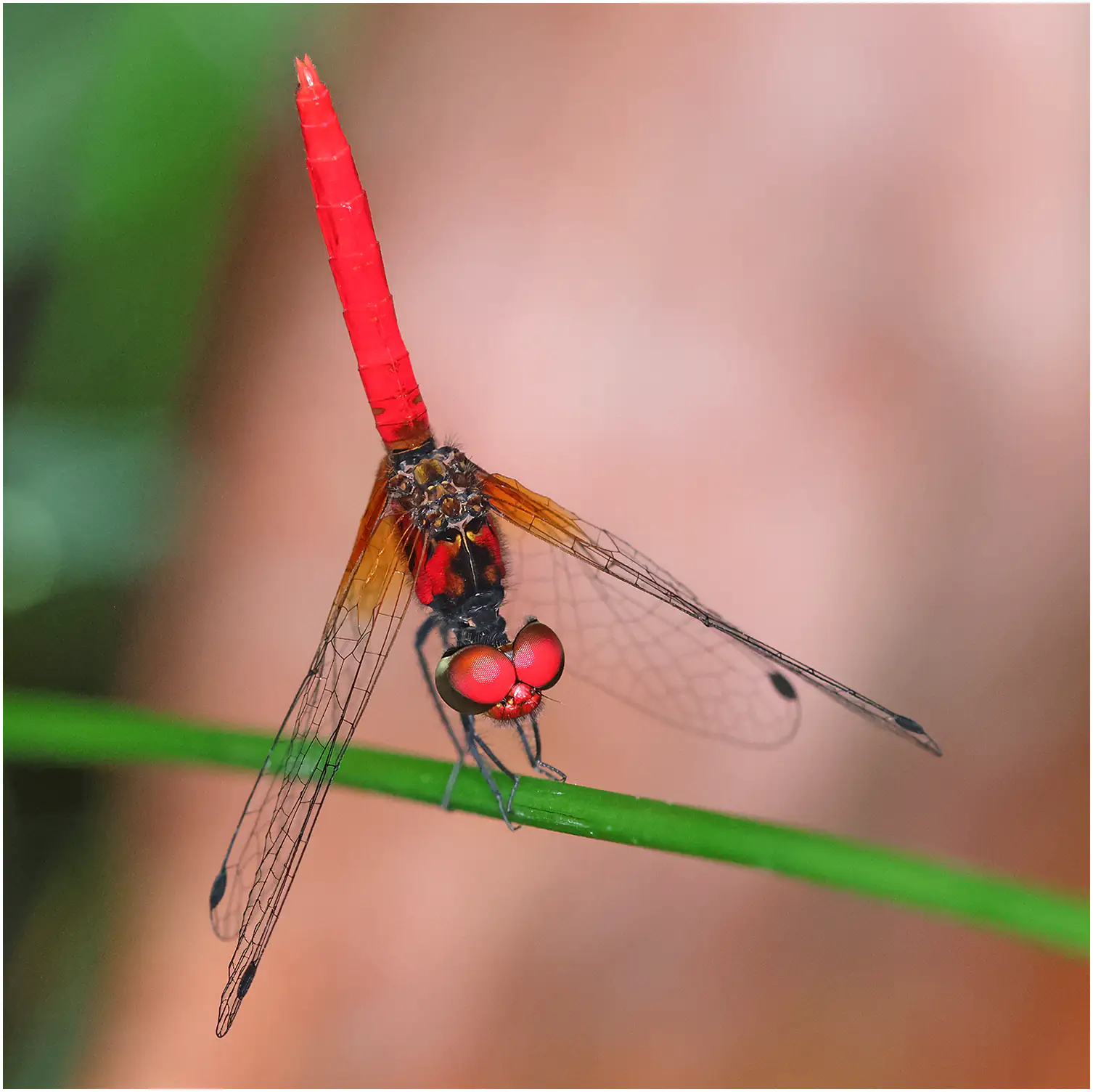
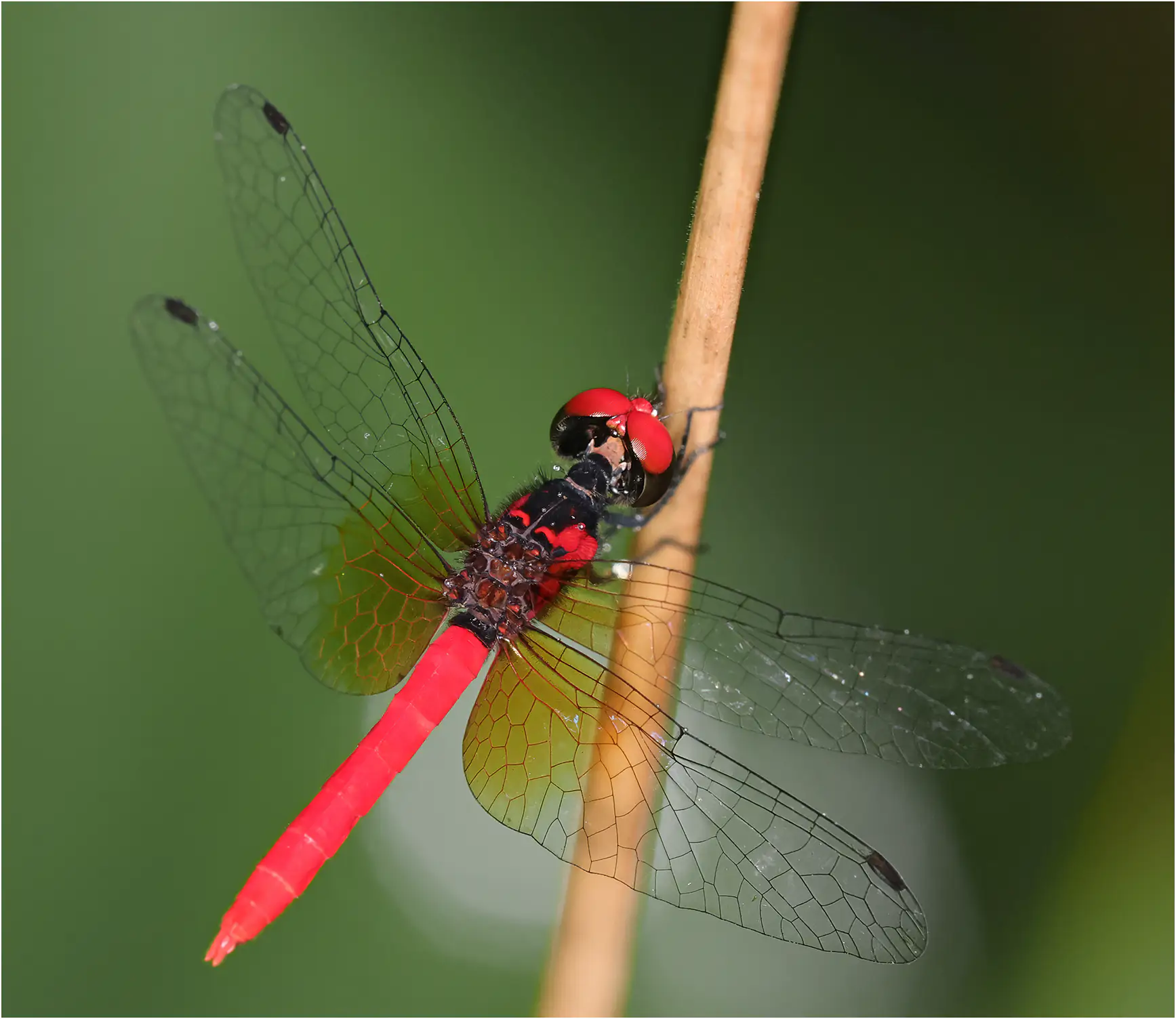
It is impossible to confuse them with any other species, in Borneo or elsewhere. They are a dazzling red, which is very difficult for cameras, which lose all the details in this very particular light. And so small that immature males and females are confused with Hymenoptera or Diptera.
Rambur writes that it is less than 2 centimeters, Ngiam and Ng (2) give it a total length of 16 to 17 mm.
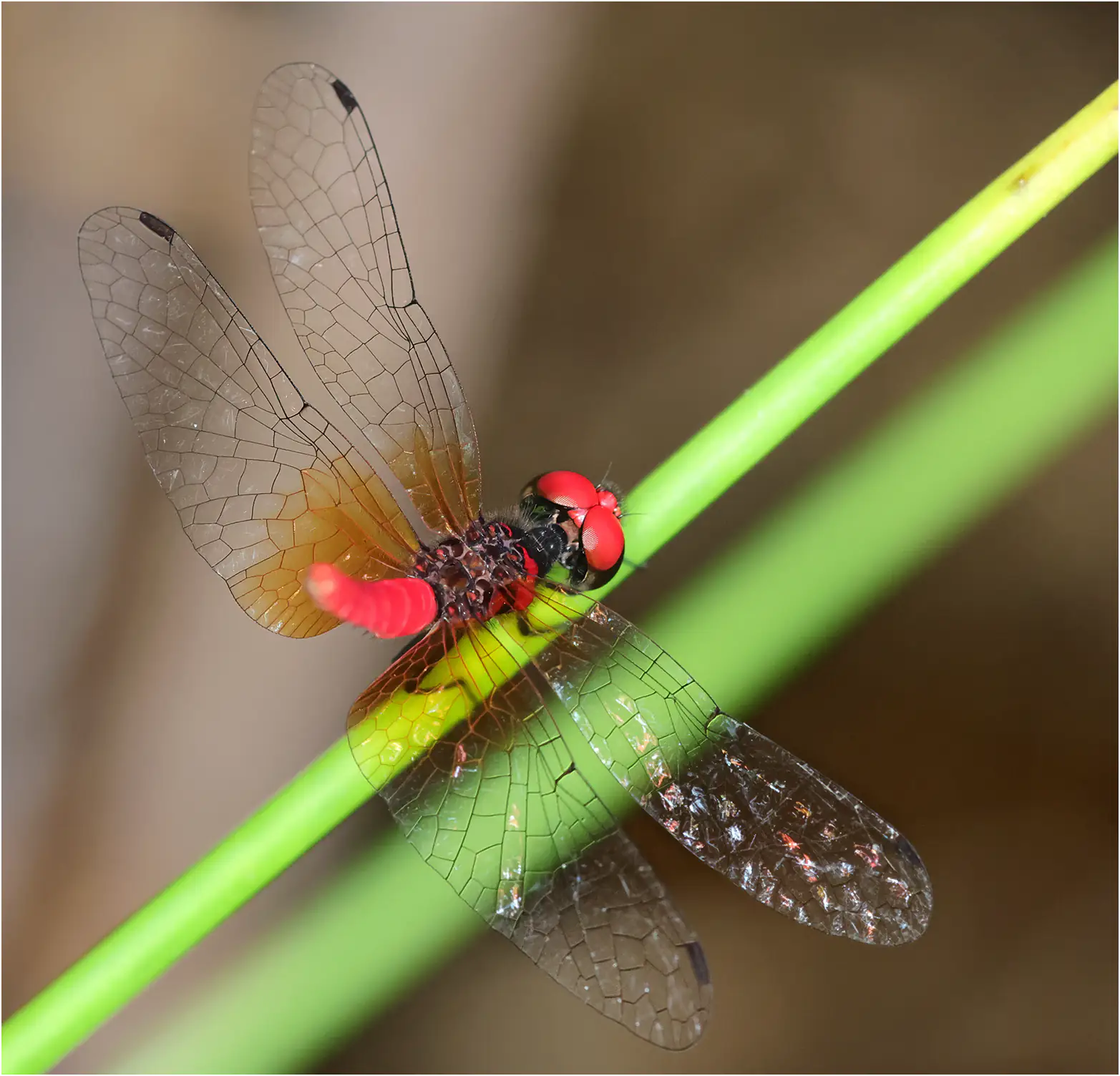
The venation is very sparse and the base of the wings is amber.
Like many dragonflies, it is a fan of the « obelisk », a vertical thermoregulatory posture, which allows it to limit the surface area of its body that it exposes to the sun.
Nannophya pygmaea male, Borneo, Kuching, Sama Jaya Nature Reserve, 18/03/2025
We encountered it at the edge of humid, even flooded, forests, at the edge of marshy peat bogs, in open areas, for mature males. Females are more discreet and we only saw them in the forest or in the shade of its limits, like immature males.
It was on this flooded space between bush and path that we encountered our first Scarlet dwarf (or Scarlet Pigmy) of the stay, a terrain that they shared with Ceriagrion cerinorubellum, Agriocnemis femina and Acisoma panorpoides.
It is one of those species in which males can be territorial, monitor and dominate a territory. Or, ambush at a short distance and intercept females coming to the water, a strategy undoubtedly less energetically costly, but which generally proves to be less fruitful (3).
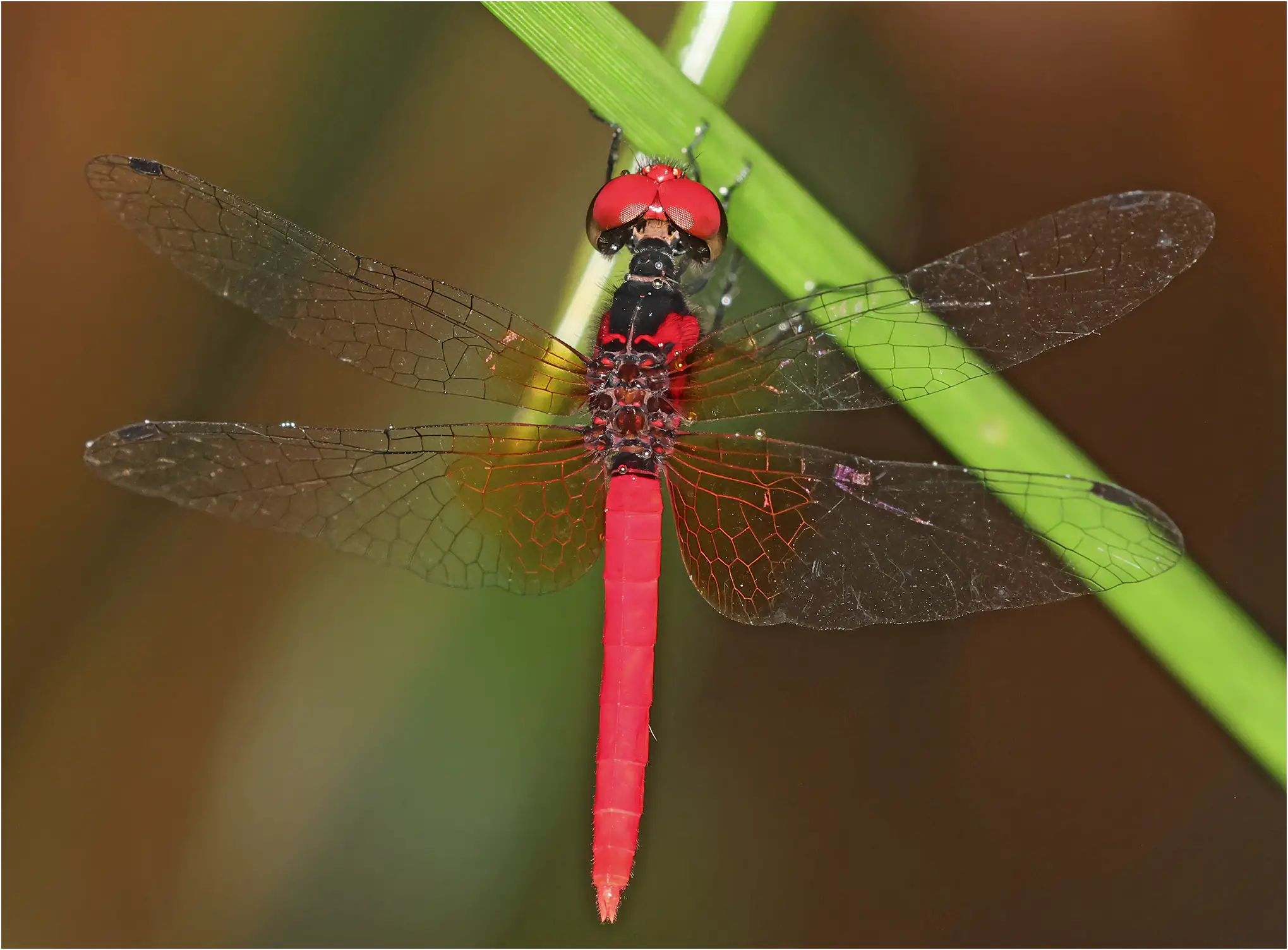
Immature males are beige and white on the abdomen, less spectacular than mature males and also less than the females, which I find sumptuous.
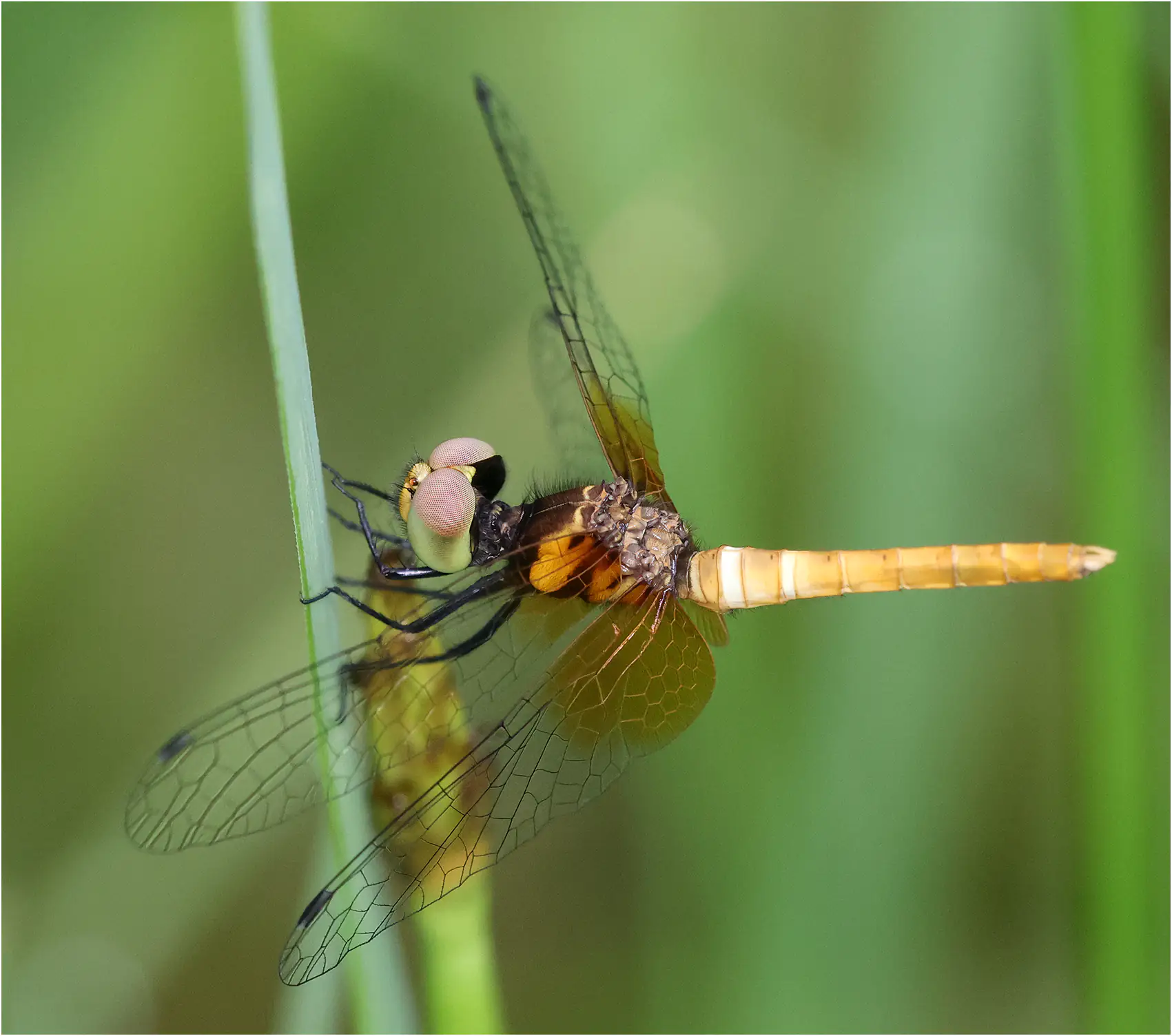
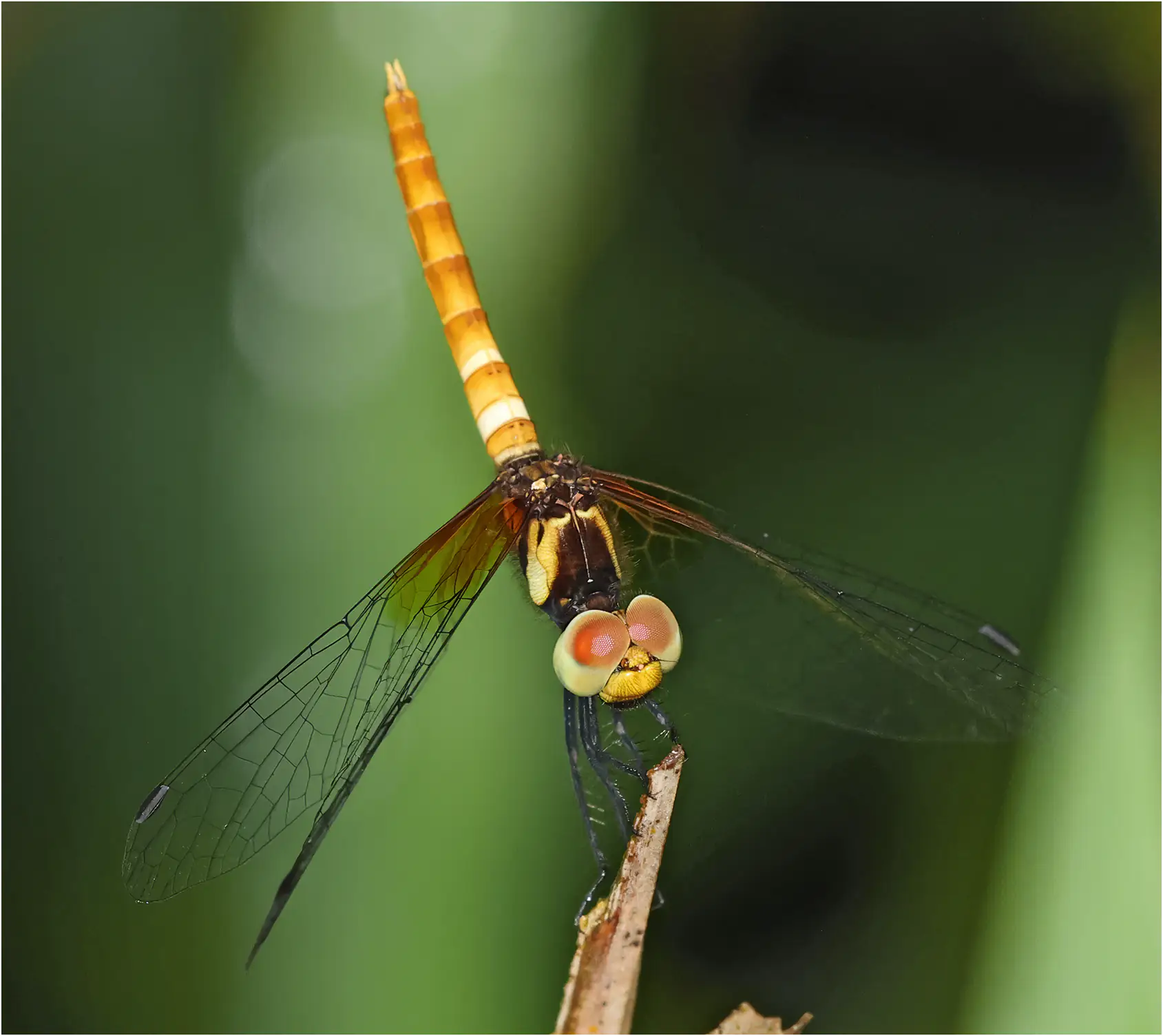
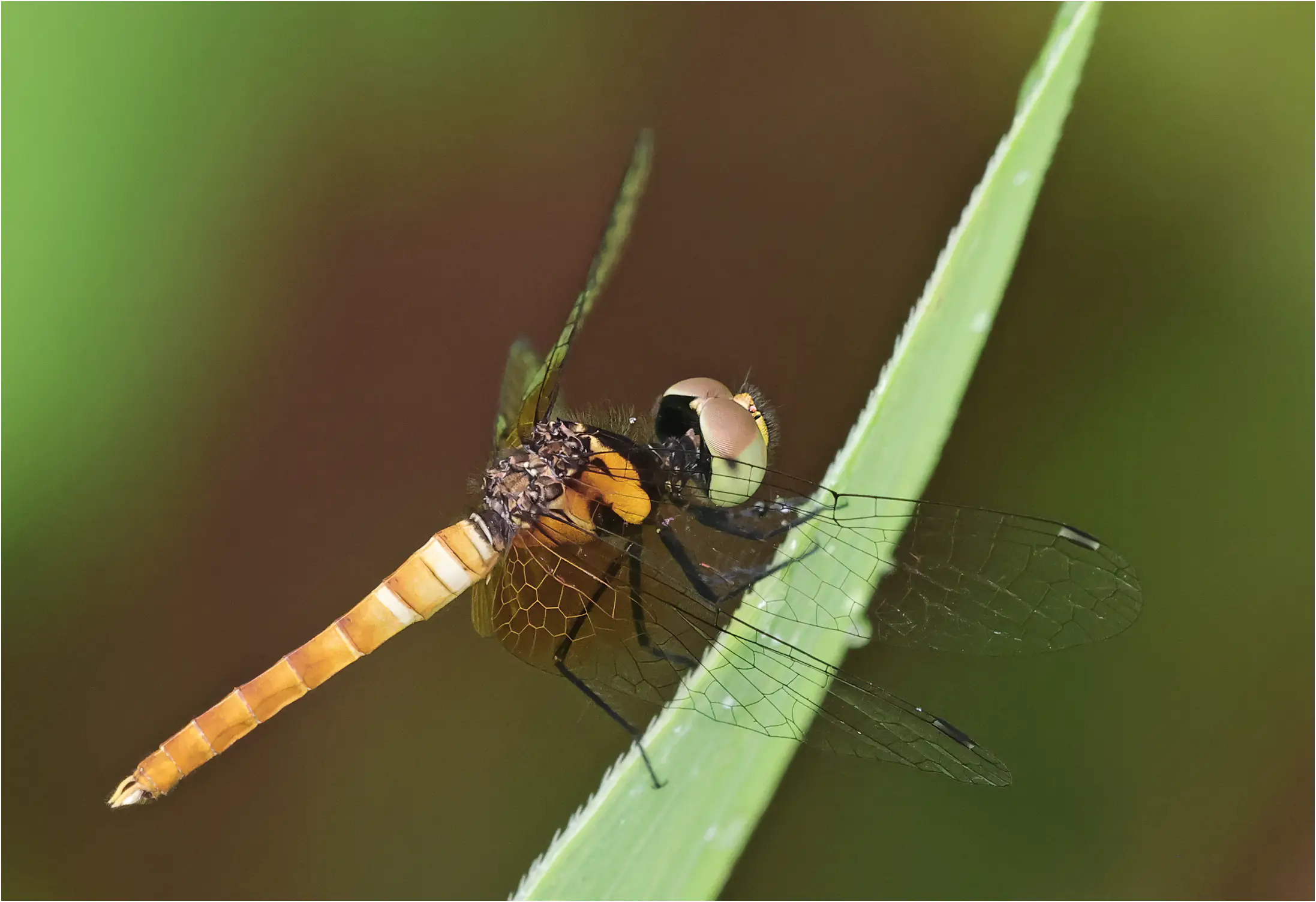
Even young ones like the ones below, their abdomens show a spectacular alternation of light and dark rings. Their eyes are still clear, their wings shiny, which testifies to their young age.
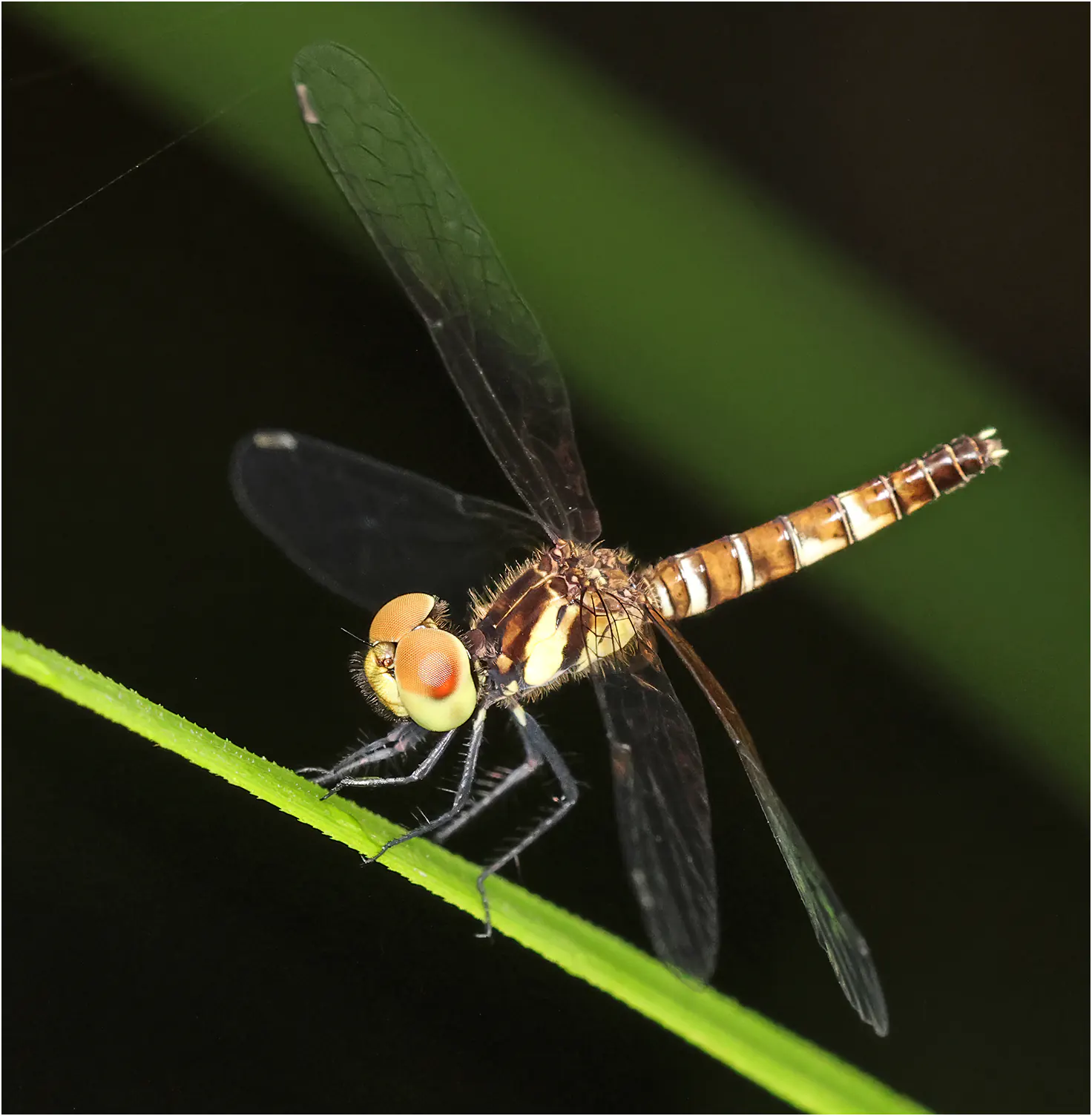
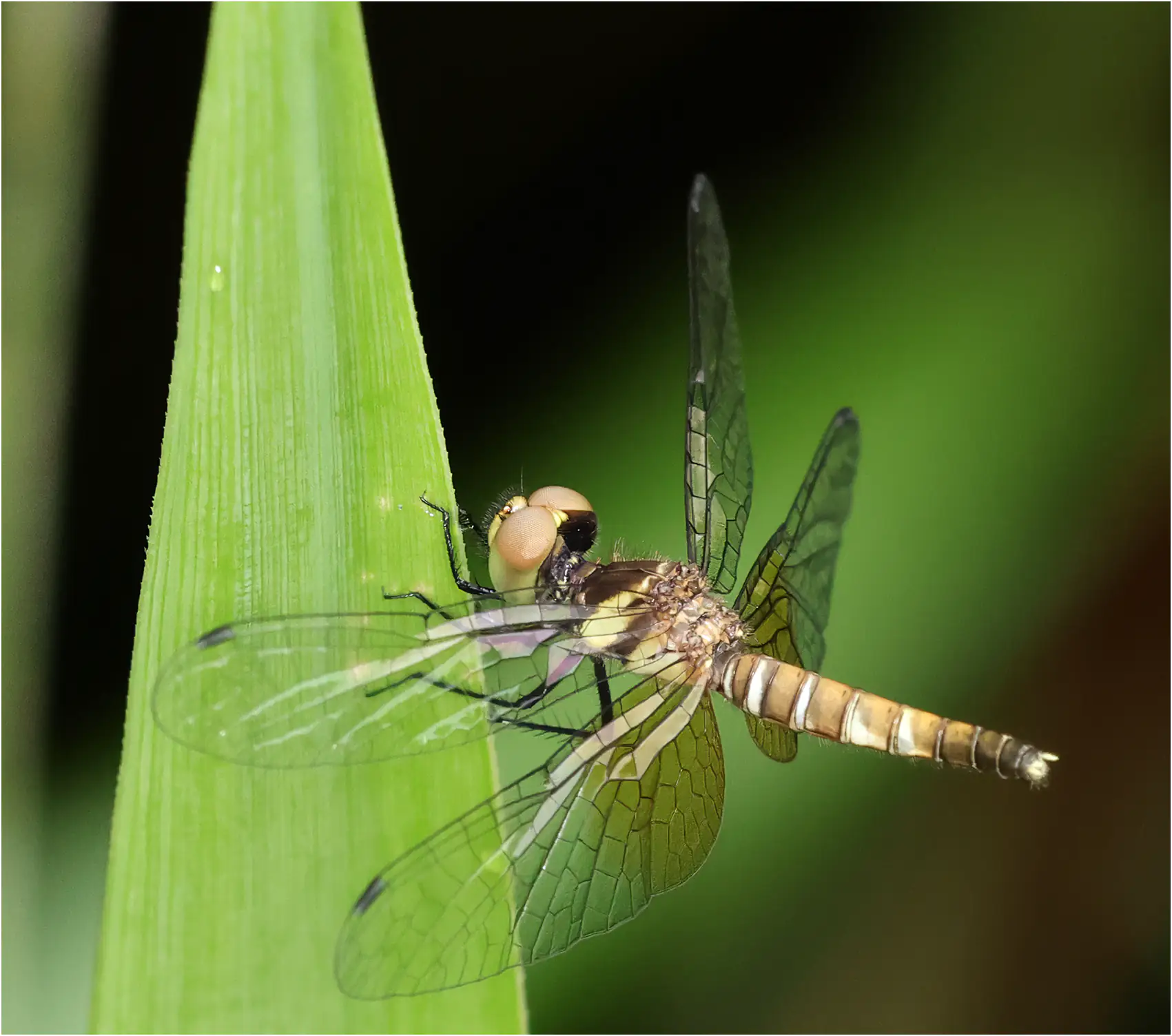
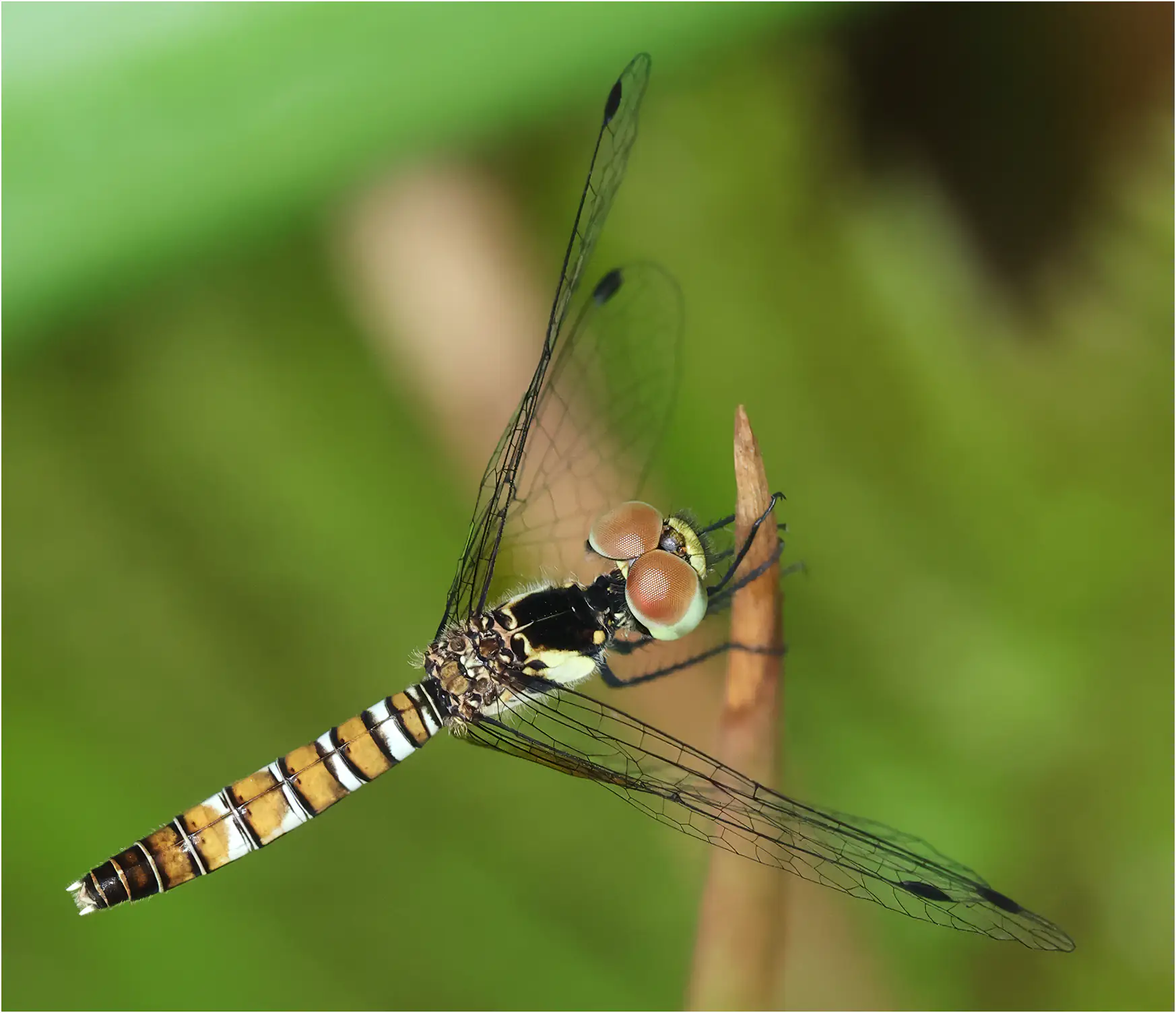
I have only contacted it once before, in Malaysia.
It is found from New Guinea to Indonesia, Borneo, the Philippines, southern Thailand and Vietnam, south-east China and Taiwan, as far as Korea and Japan.
I am putting here the link to the IUCN Red List, hoping that one day the valid data will be updated, because for the moment, I have the impression that the distribution is treated for the genus Nannophya and not the species pygmaea . Or, and this would be very surprising, it has been integrated this very curious data found on the site Odonata of India, of a N. pygmaea or Northern pygmyfly taken in Assam (eastern India), which has absolutely nothing to do with the species in question!
The females become noticeably darker and more magnificent as they mature.
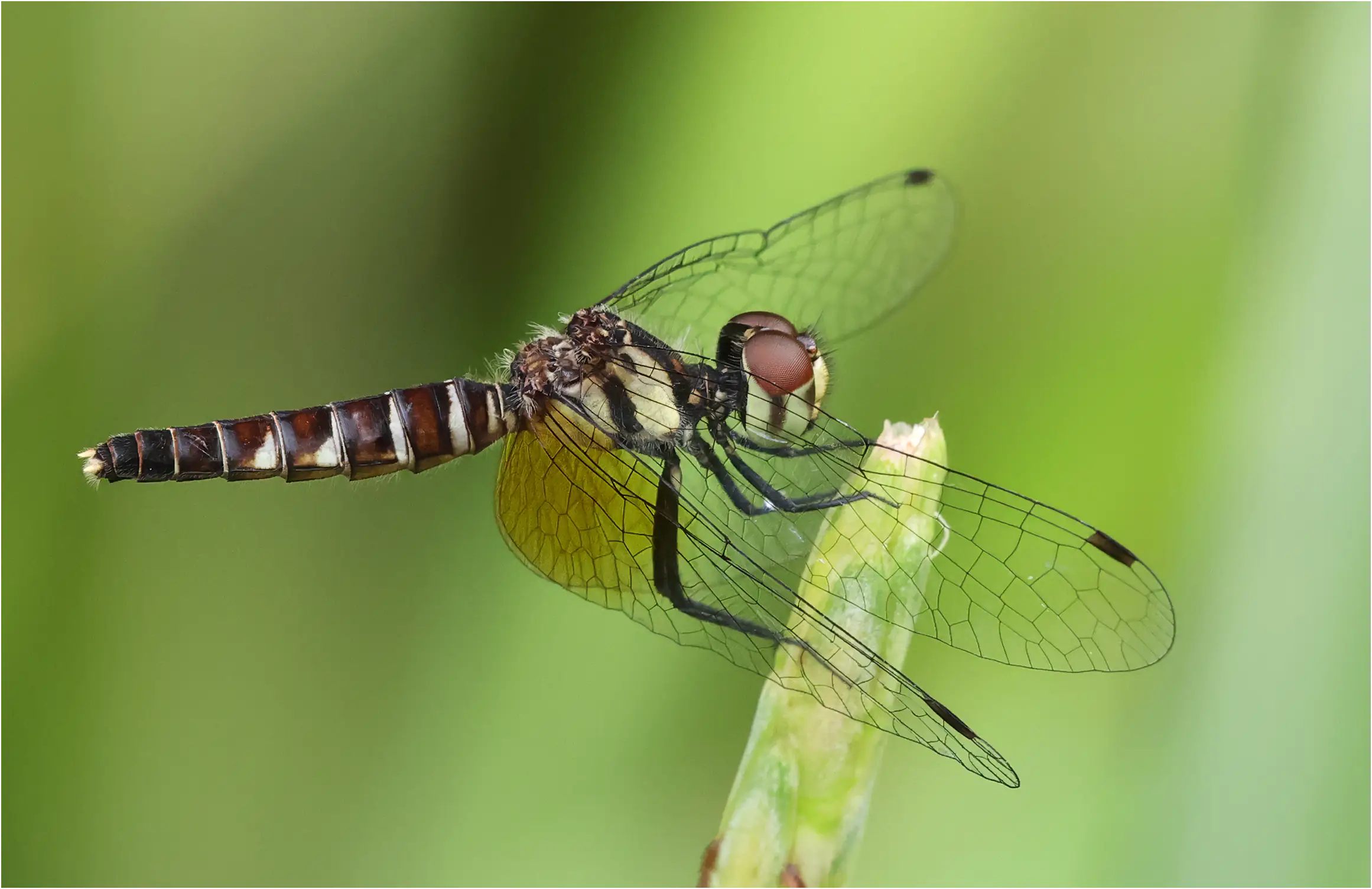
Etymology
Nannophya (4) from the Greek νᾶνος or νάννος which means dwarf and from φυή for stature. Rambur (1), who created this genus precisely for N. pygmaea, writes: « I formed this genus on the smallest known species of Libellulid and of which I have only seen the female. »
Pygmaea , from the Greek pygmaios – long as a fist, dwarf, then from the Latin pygmaeus – pygmy. Rambur therefore chose to insist for the genus name and the species name on the tiny size of the insect.
1- Rambur, Jules (1842) – Histoire naturelle des insectes. Névroptères – Librairie Encyclopédique de Roret. pp. 534 [27]
2- 2- Robin Ngiam & Marcus Ng – A photographic guide to the Dragonflies and Damselflies of Singapore – John Beaufoy Publishing – 2022
3- Yoshitaka Tsubaki & Tomohiro Ono, 1987 – Effects of age and body size on the male territorial system of the dragonfly, Nannophya pygmaea Rambur (Odonata: Libellulidae) – Animal Behaviour 35(2) : 518-525.
4- Ian Endersby & Heinrich Fliedner, The Naming of Australia’s Dragonflies, Busybird publishing, 2015.